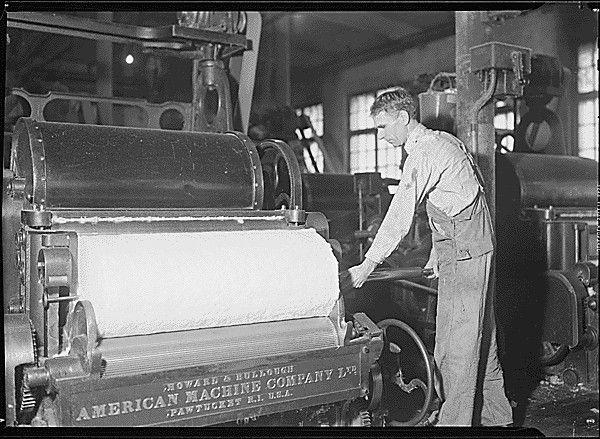The Development of the Textile Industry
Making Connections
All documents and text associated with this activity are printed below, followed by a worksheet for student responses.Introduction
The Development of the Textile Industry
Georgia's textile industry made significant contributions to the state's economy. The textile industry blossomed from Georgia's widespread production of cotton. Cotton is a crop that produces white fibers that can be made into thread and cloth. Cotton requires a lot of nutrients to grow and can exhaust the soil if grown repeatedly. The widespread use of chemical fertilizers in the 1850s helped to provide the nutrients needed to encourage plant growth and maximize yields.
Cotton became an important crop for Georgia in the late 1700s. Planters first grew Sea Island cotton along the coast. This cotton had long fibers which could be easily separated from the seed. The long fibers could then be woven into fine cloth. Sea Island cotton was only suitable for growing along the coast. This kept it from becoming widely planted; however, another type of cotton with shorter cotton could be grown further inland. This cotton clung was labor-intensive to grow. Not only did it take a lot of labor to plant and harvest, but it also required a lot of labor to separate the fibers from the seed. This kept it from being widely planted.
At the end of the 18th century, the machine was invented to separate the cotton fibers from the seeds easily and quickly. This made cotton more profitable to grow. As a result, cotton became widely planted. As the acreage planted in cotton increased, so did the need for labor and fertilizer.
Once harvested, the cotton was cleaned and then sent to cotton mills where it was carded and spun into thread. The spools of thread were then sent to textile mills where it was woven into cloth. There were few cotton mills in Georgia at the time, and they mostly existed near the fall line where they could take advantage of the water power. Up until the Civil War, most of the cotton and textile mills were in the North. However, after Reconstruction, Georgia's leaders wanted to industrialize the state and build cotton and textile mills closer to the cotton fields. To do this, they needed to attract investors. At the end of the 1880s, Atlanta hosted three expositions to highlight the economic opportunities in the South and to encourage Northern investment. The result led to the expansion of cotton and textile mills across the state.
Activity
In this activity, you will trace the development of the textile industry during the 19th century. You will analyze documents in a progressive timeline. After analyzing the documents(s), you will be asked to pause and reflect on how it relates to the previous documents. What connections can you find between the documents? When you finish analyzing all of the documents, you will be asked to write a paragraph summarizing the development of the textile industry using specific examples from the documents.
As you progress through the activity be sure to consider the following:
- What groups of people were involved with the development of the textile industry?
- What technological advancements made the development of the textile industry possible?
Directions
Read the introduction and the directions. When you are ready, click on "Start the Activity" to begin. Analyze the documents. "Click on "View Document Details" to learn more and see each document more closely. Click on “Next” to advance to the next screen. On the student response screens, you will be provided with a blank box in which you can type a short answer explaining how the document(s) you analyzed relate to the previous documents. When you are finished, check "When You Are Done". In this section, you will need to use what you have learned from the documents to write a paragraph explaining how the textile industry developed in Georgia.
Name:
Class:
Class:
Worksheet
The Development of the Textile Industry
Making Connections
Examine the documents and text included in this activity. Fill in any blanks in the sequence with your thoughts and write your conclusion response in the space provided.Pinal County, Arizona. Texas cotton picker works in Arizona cotton field
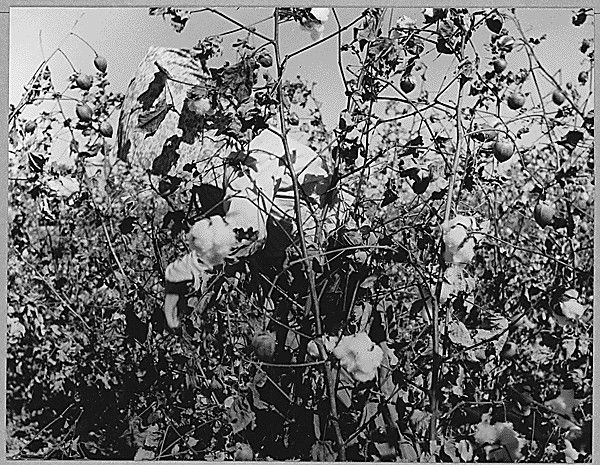
Eli Whitney`s Cotton Gin Patent Drawing

Enter your response
Map Showing the Relation Existing Between Slave Labor and Cotton Production, 1860. Schomburg Center for Research in Black Culture, Jean Blackwell Hutson Research and Reference Division, The New York Public Library. "Map showing the relation existing between slave labor and cotton production 1860." New York Public Library Digital Collections. Accessed April 20, 2022. https://digitalcollections.nypl.org/items/510d47df-ac65-a3d9-e040-e00a18064a99.

Enter your response
Proposed Thirteenth Amendment Regarding the Abolition of Slavery

Facsimile of the Emancipation Proclamation

Enter your response
Freedman's labor contract, 1866 January 1. 1866-01-01. Retrieved from the Digital Public Library of America, http://dlg.galileo.usg.edu/id:dlg_turningpoint_ahc0586f-001. (Accessed April 5, 2022.)

Enter your response
Sharecroppers in Cotton Field. Not Available. "[Photograph of sharecroppers in cotton field, Randolph County, Georgia, 1910]." 1910. April 18, 2022. http://dlg.galileo.usg.edu/vang/do:ran218-82.

Enter your response
Soil Exhaustion and Erosion. Brown, R. Harold. "Soil erosion." 2003/2019. April 20, 2022. http://www.georgiaencyclopedia.org/articles/geography-environment/soil-erosion.

Enter your response
Southern States Phosphate and Fertilizer Company, 1901, Dulany Industries, https://sschemical.com/historical-timeline/

Enter your response
Cotton on Sharecropper's Porch Shahn, Ben, 1898-1969. Cotton on porch of sharecropper's home, Maria plantation, Arkansas, October 1935.. 1935. Retrieved from the Digital Public Library of America, https://digitalcollections.nypl.org/items/8d506f90-c612-012f-12da-58d385a7bc34. (Accessed April 5, 2022.)

Enter your response
Bird's-eye view of the cotton states and international exposition--Atlanta, GA, U.S.A. , 1895. [Akron, Ohio: publisher not transcribed] Photograph. https://www.loc.gov/item/2018695423/.

Enter your response
Cotton Mill Carding Room, 1892 [1892]. "Carding room, cotton mill, Augusta, Ga., U.S.A.." 1892. April 21, 2022. http://www.loc.gov/pictures/collection/stereo/item/2018647308/.

Enter your response
A little spinner in a Georgia Cotton Mill

High Point, North Carolina - Textiles. Pickett Yarn Mill. Pickers tonder - first process after cotton came in mill - very little skill required - showing man and machine in action

Enter your response
1
Activity Element
Pinal County, Arizona. Texas cotton picker works in Arizona cotton field
Page 1

2
Activity Element
Eli Whitney`s Cotton Gin Patent Drawing
Page 1

3
Activity Element
Map Showing the Relation Existing Between Slave Labor and Cotton Production, 1860. Schomburg Center for Research in Black Culture, Jean Blackwell Hutson Research and Reference Division, The New York Public Library. "Map showing the relation existing between slave labor and cotton production 1860." New York Public Library Digital Collections. Accessed April 20, 2022. https://digitalcollections.nypl.org/items/510d47df-ac65-a3d9-e040-e00a18064a99.

4
Activity Element
Proposed Thirteenth Amendment Regarding the Abolition of Slavery
Page 2

5
Activity Element
Facsimile of the Emancipation Proclamation
Page 2

6
Activity Element
Freedman's labor contract, 1866 January 1. 1866-01-01. Retrieved from the Digital Public Library of America, http://dlg.galileo.usg.edu/id:dlg_turningpoint_ahc0586f-001. (Accessed April 5, 2022.)

7
Activity Element
Sharecroppers in Cotton Field. Not Available. "[Photograph of sharecroppers in cotton field, Randolph County, Georgia, 1910]." 1910. April 18, 2022. http://dlg.galileo.usg.edu/vang/do:ran218-82.

8
Activity Element
Soil Exhaustion and Erosion. Brown, R. Harold. "Soil erosion." 2003/2019. April 20, 2022. http://www.georgiaencyclopedia.org/articles/geography-environment/soil-erosion.

9
Activity Element
Southern States Phosphate and Fertilizer Company, 1901, Dulany Industries, https://sschemical.com/historical-timeline/

10
Activity Element
Cotton on Sharecropper's Porch Shahn, Ben, 1898-1969. Cotton on porch of sharecropper's home, Maria plantation, Arkansas, October 1935.. 1935. Retrieved from the Digital Public Library of America, https://digitalcollections.nypl.org/items/8d506f90-c612-012f-12da-58d385a7bc34. (Accessed April 5, 2022.)

11
Activity Element
Bird's-eye view of the cotton states and international exposition--Atlanta, GA, U.S.A. , 1895. [Akron, Ohio: publisher not transcribed] Photograph. https://www.loc.gov/item/2018695423/.

12
Activity Element
Cotton Mill Carding Room, 1892 [1892]. "Carding room, cotton mill, Augusta, Ga., U.S.A.." 1892. April 21, 2022. http://www.loc.gov/pictures/collection/stereo/item/2018647308/.

13
Activity Element
A little spinner in a Georgia Cotton Mill
Page 1

14
Activity Element
High Point, North Carolina - Textiles. Pickett Yarn Mill. Pickers tonder - first process after cotton came in mill - very little skill required - showing man and machine in action
Page 1

Conclusion
The Development of the Textile Industry
Making Connections
Concluding Activity
Now that you have finished analyzing the documents and identifying the relationships between them, you will use the information you learned from the documents to help you explain how the textile industry developed in Georgia.
Historical Context:
The nineteenth century saw an expansion in the production of cotton and the development of Georgia's textile industry. Following Reconstruction, Northern investment spurred the expansion of cotton and textile mills across the state.Task
Using information from the documents, and your knowledge of Georgia's history, write a paragraph in which you explain how the textile industry in Georgia developed over time. Be sure to identify the groups of people and technological advancements that contributed to the development of the textile industry.Guidelines
- Use a logical and clear organization
- Incorporate information from the documents
- Incorporate relevant information from outside information
Your Response
Document
Pinal County, Arizona. Texas cotton picker works in Arizona cotton field
11/1940
Full caption reads as follows: Pinal County, Arizona. Texas cotton picker works in Arizona cotton field.
This primary source comes from the Records of the Bureau of Agricultural Economics.
National Archives Identifier: 522014
Full Citation: Pinal County, Arizona. Texas cotton picker works in Arizona cotton field; 11/1940; Records of the Bureau of Agricultural Economics, . [Online Version, https://www.docsteach.org/documents/document/pinal-county-arizona-texas-cotton-picker-works-in-arizona-cotton-field, May 5, 2024]Pinal County, Arizona. Texas cotton picker works in Arizona cotton field
Page 1
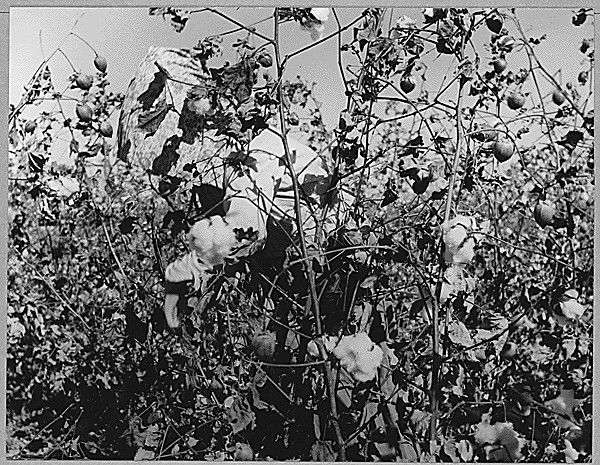
Document
Eli Whitney's Cotton Gin Patent Drawing
3/14/1794
Eli Whitney's cotton gin – for which he received a patent on March 14, 1794 – introduced a new, profitable technology to agricultural production in America.
The cotton gin is a device for removing the seeds from cotton fiber. Such machines had been around for centuries when Eli Whitney made his improvements in 1794. However, Whitney's was the first to clean short-staple cotton; and a single device could produce up to fifty pounds of cleaned cotton in a day. This made cotton a profitable crop for the first time.
After this invention, the yield of raw cotton doubled each decade after 1800. Demand was fueled by other inventions of the Industrial Revolution, such as the machines to spin and weave it, and the steamboat to transport it. By the mid-1800s, America was growing three-quarters of the world's supply of cotton, most of it shipped to England or New England where it was manufactured into cloth. During this time, tobacco fell in value; rice exports at best stayed steady; and sugar began to thrive, but only in Louisiana. At mid-century the South provided three-fifths of America's exports—most of it in cotton.
Ultimately, however, the most significant impact of the cotton gin was on the growth of slavery. Though the cotton gin reduced the labor of removing seeds, it did not reduce the number of enslaved people forced to grow and pick the cotton. In fact, the opposite occurred. Cotton growing became so profitable for plantation owners that it greatly increased their demand for both land and enslaved labor. Because of the cotton gin, enslaved people labored on ever-larger plantations where work was more regimented and relentless.
The cotton gin is a device for removing the seeds from cotton fiber. Such machines had been around for centuries when Eli Whitney made his improvements in 1794. However, Whitney's was the first to clean short-staple cotton; and a single device could produce up to fifty pounds of cleaned cotton in a day. This made cotton a profitable crop for the first time.
After this invention, the yield of raw cotton doubled each decade after 1800. Demand was fueled by other inventions of the Industrial Revolution, such as the machines to spin and weave it, and the steamboat to transport it. By the mid-1800s, America was growing three-quarters of the world's supply of cotton, most of it shipped to England or New England where it was manufactured into cloth. During this time, tobacco fell in value; rice exports at best stayed steady; and sugar began to thrive, but only in Louisiana. At mid-century the South provided three-fifths of America's exports—most of it in cotton.
Ultimately, however, the most significant impact of the cotton gin was on the growth of slavery. Though the cotton gin reduced the labor of removing seeds, it did not reduce the number of enslaved people forced to grow and pick the cotton. In fact, the opposite occurred. Cotton growing became so profitable for plantation owners that it greatly increased their demand for both land and enslaved labor. Because of the cotton gin, enslaved people labored on ever-larger plantations where work was more regimented and relentless.
This primary source comes from the Records of the Patent and Trademark Office.
National Archives Identifier: 102278457
Full Citation: Eli Whitney's Cotton Gin Patent Drawing; 3/14/1794; Restored Patent Drawings, 1837 - 1847; Records of the Patent and Trademark Office, ; National Archives at College Park, College Park, MD. [Online Version, https://www.docsteach.org/documents/document/whitney-cotton-gin-patent, May 5, 2024]Eli Whitney's Cotton Gin Patent Drawing
Page 1
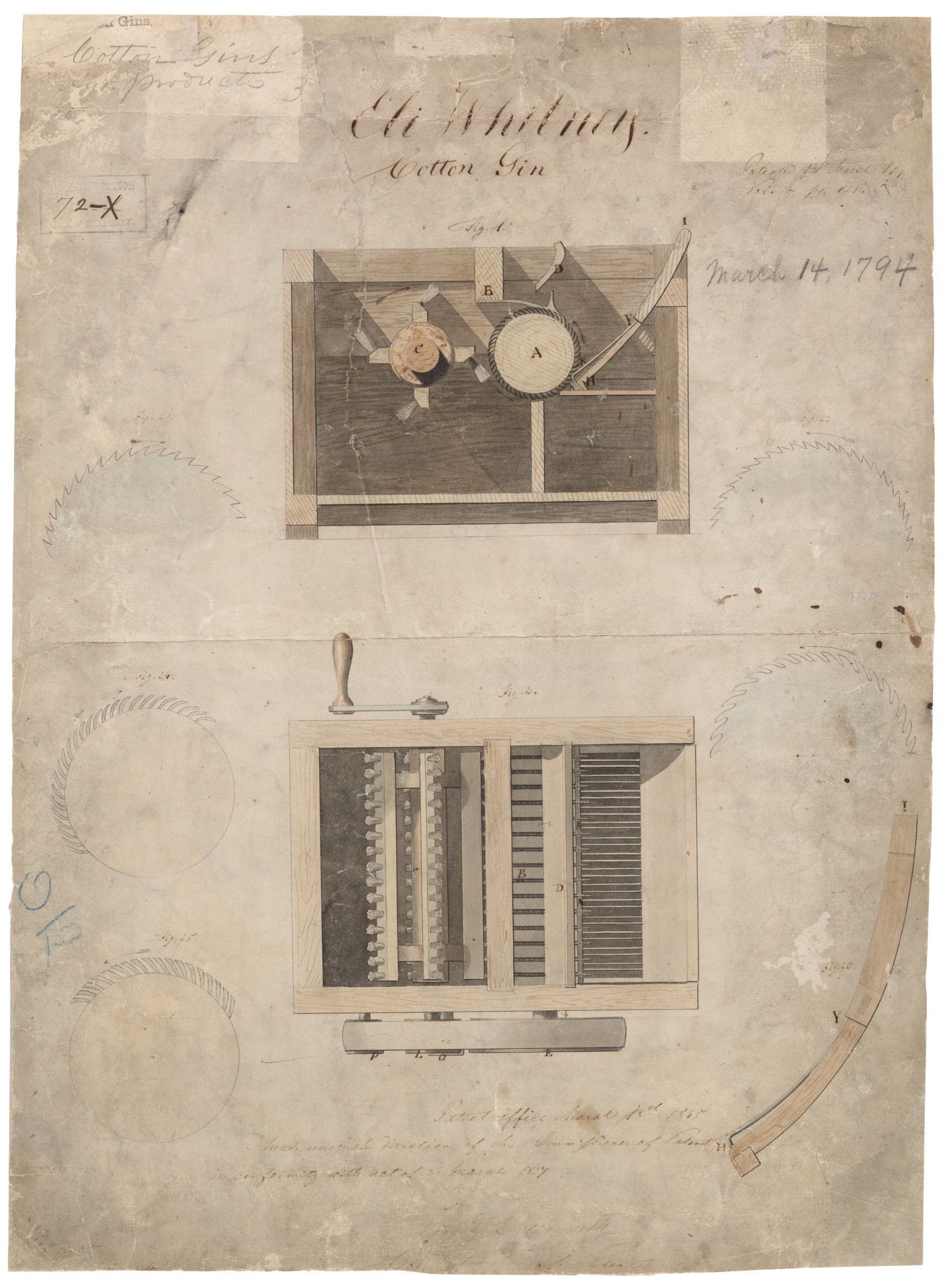
Document
Proposed Thirteenth Amendment Regarding the Abolition of Slavery
3/2/1861
As southern states began seceding during the winter of 1860–61, several compromises were proposed to hold the nation together. One was a constitutional amendment that would have prevented Congress from passing legislation interfering with a state’s “domestic institutions . . . including that of persons held to labor or service.” Amendment sponsors hoped its approval would keep border states in the Union and reassure southerners that Republicans opposed only the extension, not the existence, of slavery. Congress approved the amendment, but only two state legislatures ratified it."
This primary source comes from the General Records of the United States Government.
National Archives Identifier: 4688370
Full Citation: Proposed Thirteenth Amendment Regarding the Abolition of Slavery; 3/2/1861; General Records of the United States Government, . [Online Version, https://www.docsteach.org/documents/document/proposed-thirteenth-amendment-regarding-the-abolition-of-slavery, May 5, 2024]Proposed Thirteenth Amendment Regarding the Abolition of Slavery
Page 2
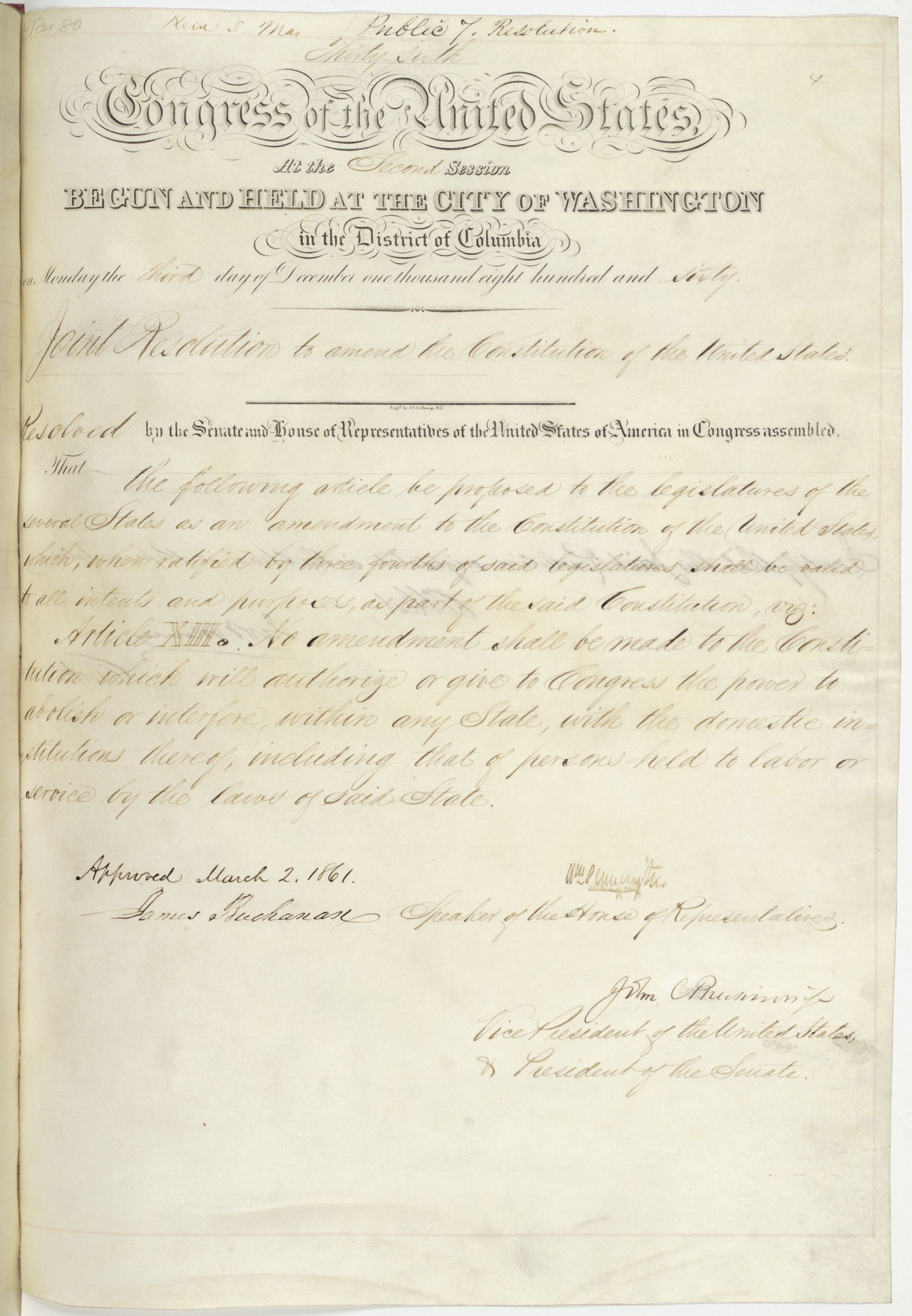
Document
Facsimile of the Emancipation Proclamation
1863
This is a facsimile of the Emancipation Proclamation, reproduced by the United States Sanitary Commission and sold at the Soldiers Home, Chicago, Illinois, to fund the creation of a permanent home for disabled soldiers. It was purchased by Charles Page Bryan.
This primary source comes from the General Records of the United States Government.
National Archives Identifier: 6923829
Full Citation: Facsimile of the Emancipation Proclamation; 1863; Presidential Proclamations, 1791 - 2011; General Records of the United States Government, ; National Archives at College Park, College Park, MD. [Online Version, https://www.docsteach.org/documents/document/facsimile-of-the-emancipation-proclamation, May 5, 2024]Facsimile of the Emancipation Proclamation
Page 2
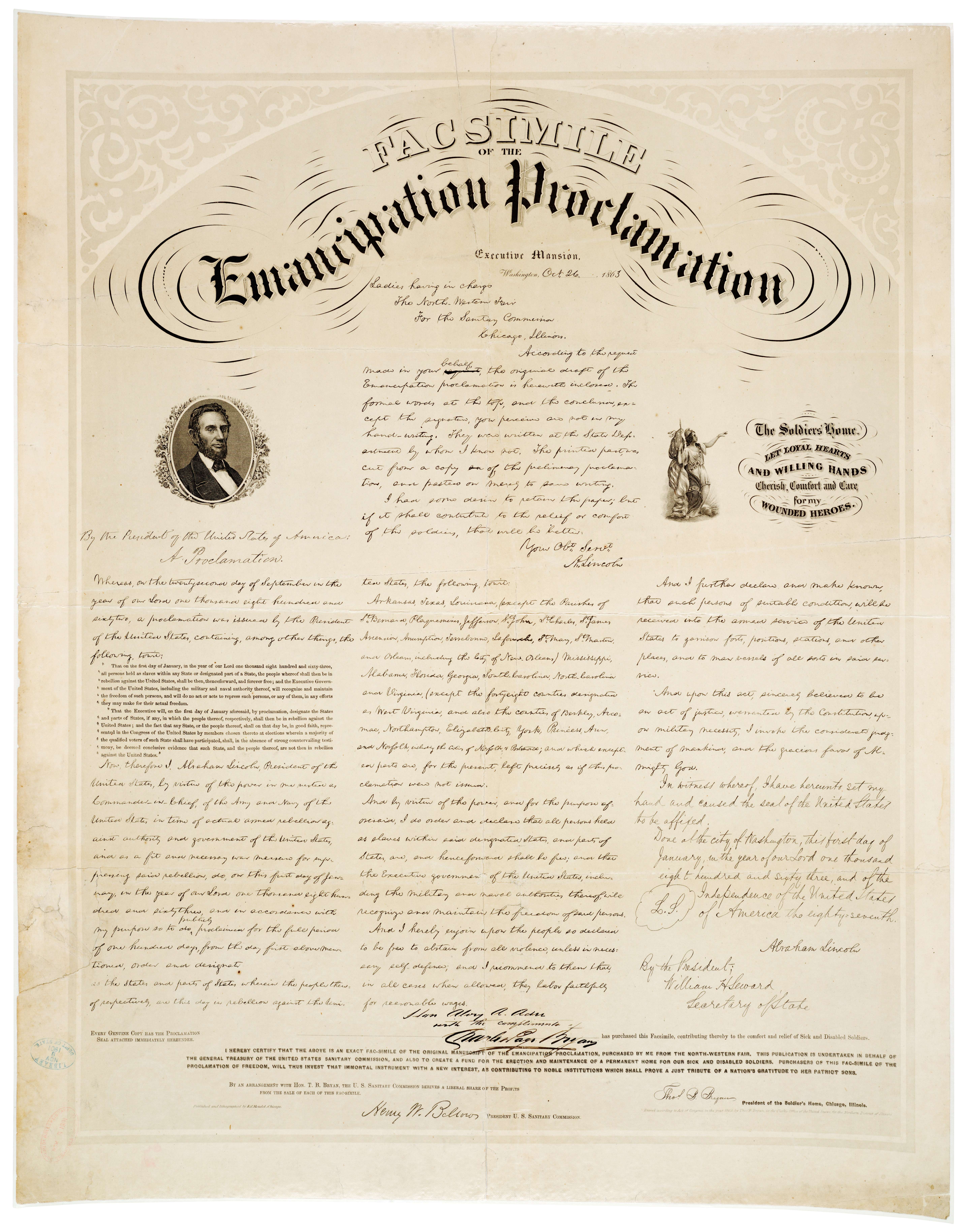
Document
A little spinner in a Georgia Cotton Mill
1/1909
This primary source comes from the Records of the Children's Bureau.
National Archives Identifier: 523157
Full Citation: Photograph 102-LH-545; A little spinner in a Georgia Cotton Mill; 1/1909; National Child Labor Committee Photographs taken by Lewis Hine, ca. 1912 - ca. 1912; Records of the Children's Bureau, ; National Archives at College Park, College Park, MD. [Online Version, https://www.docsteach.org/documents/document/a-little-spinner-in-a-georgia-cotton-mill, May 5, 2024]A little spinner in a Georgia Cotton Mill
Page 1
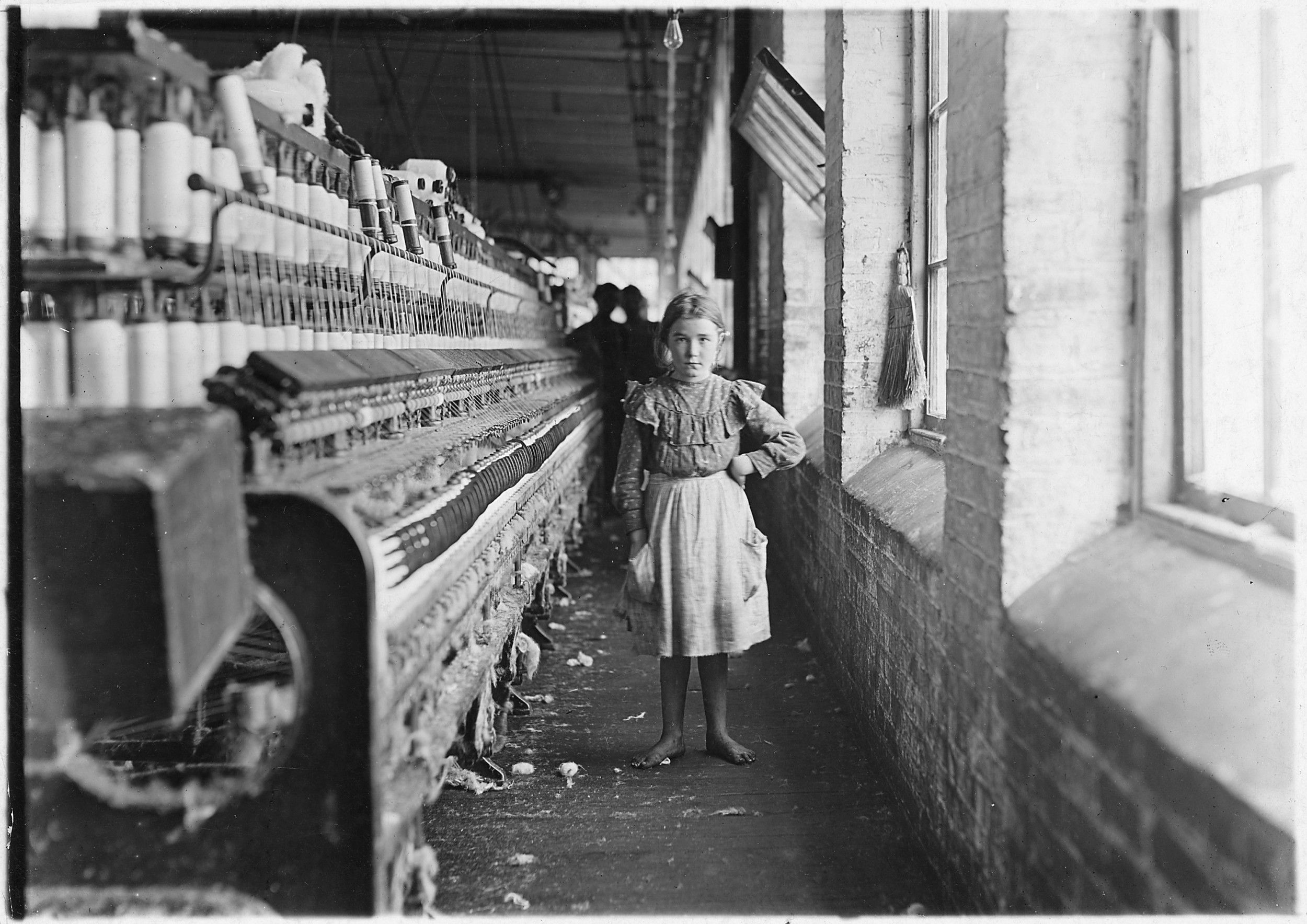
Document
High Point, North Carolina - Textiles. Pickett Yarn Mill. Pickers tonder - first process after cotton came in mill - very little skill required - showing man and machine in action
1/1937
This is from a series of photographs taken by Lewis Hine for the National Research Project. The National Research Project on Reemployment Opportunities and Recent Changes in Industrial Techniques was organized in December 1935 as part of the National Research Program of the Works Progress Administration. Its purpose was to investigate recent changes in industrial techniques and evaluate their effects on employment. Between 1937 and 1941 the NRP published more than 700 reports on a broad variety of agricultural, manufacturing and mining activities. In late 1936 the distinguished documentary photographer Lewis Hine was hired as chief photographer. Hine made photo studies in 14 industrial communities from December 1936 to July 1937. General views of the community, working conditions in factories, machinery, and workers, are pictured for each photo study.
This primary source comes from the Records of the Work Projects Administration.
National Archives Identifier: 518502
Full Citation: High Point, North Carolina - Textiles. Pickett Yarn Mill. Pickers tonder - first process after cotton came in mill - very little skill required - showing man and machine in action; 1/1937; Records of the Work Projects Administration, . [Online Version, https://www.docsteach.org/documents/document/high-point-north-carolina-textiles-pickett-yarn-mill-pickers-tonder-first-process-after-cotton-came-in-mill-very-little-skill-required-showing-man-and-machine-in-action, May 5, 2024]High Point, North Carolina - Textiles. Pickett Yarn Mill. Pickers tonder - first process after cotton came in mill - very little skill required - showing man and machine in action
Page 1
